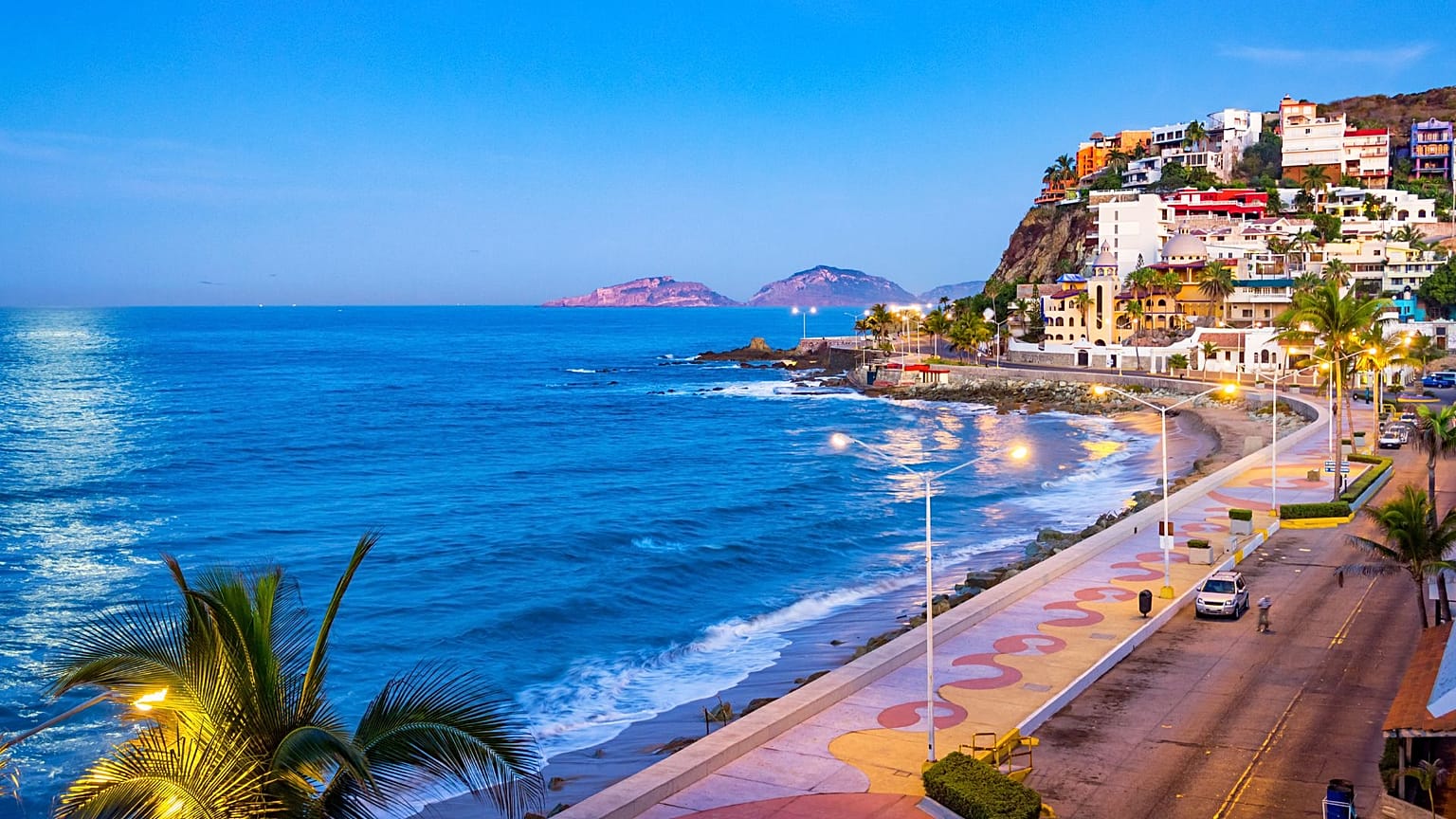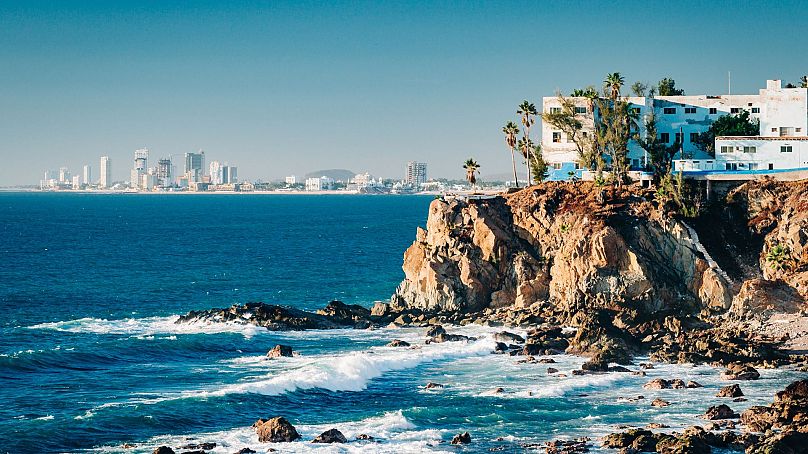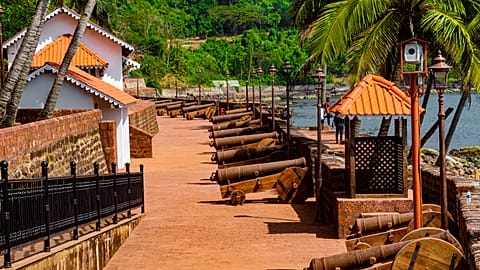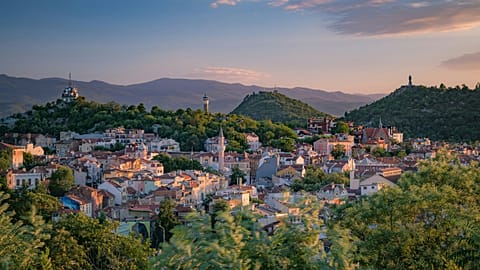Under-the-radar Mazatlán is becoming a hub for US digital nomads.
Does logging in to a remote job from a beach in Mexico sound like a dream? It’s a reality for an increasing number of workers from the United States.
An estimated 17.3 million Americans now combine remote work with travel to become 'digital nomads'.
As cold weather rolls in across the US, beachy destinations and vibrant, warm-weather cities in Mexico and Latin America are even more attractive for workers who can set up shop anywhere.
The number of digital nomads is expected to rise - as it has in recent years - making the work-from-the-beach lifestyle more attainable than it has ever been for millions of American workers.
Mexico is one of the most popular destinations for US remote workers
While savvy remote workers combining travel with online jobs is nothing new, the digital nomad lifestyle trend exploded in 2020.
MBO Trends reports that remote workers coupling online work with travel has increased by 133 per cent since 2019. As domestic and international travel slowly returned, many new online workers were bitten by the travel bug and never looked back.
Remote workers often decide to hit the road in search of a better climate, more affordable cost of living, and a better work-life balance.
“Digital nomads want to ‘work to live,’ as opposed to ‘live to work,'” says Edna Gutierrez, Marketing Director of the Tourism Board of Mazatlán, one of the Mexican cities that has welcomed thousands of new remote workers from across North America in recent years.
Mexico is one of the most popular destinations for US remote workers hitting the road. The US State Department estimates that 1.6 million Americans live in Mexico, with even more based there temporarily as digital nomads.
It’s such a big trend that in 2022, Airbnb reported it partnered with Mexico City to create a program just for the city’s growing digital nomad population. Airbnb even identified that long-term stays via the platform had increased by almost 90 per cent in 2022 from 2019.
Why do American digital nomads choose Mexico?
Jessica Bishop, founder of The Budget Savvy Bride, has spent months at a time working from Playa del Carmen, a beach town on the Yucatán Peninsula, for several years now.
“The city is super walkable, has access to beautiful beaches, and has reliable internet service and infrastructure to make the transition simple," she says. "We can get access to pretty much anything we need via Amazon Mexico, or there’s even a Walmart and Sam’s Club in town.”
Mexico’s visa options, she adds, make extended stays easy and are another appealing reason to choose Mexico.
As remote workers discover how easy it can be to make this unique online employment and travel lifestyle work in idyllic destinations, estimates about the increasing number of US digital nomads seem accurate.
Mazatlán is a hub for digital nomads
One increasingly popular destination for remote workers from the US is Mazatlán, a small but vibrant city located on the golden sands of the Pacific Coast of central Mexico. It may not have the name recognition of Mexico City or Playa del Carmen, but that’s part of its appeal for remote workers.
“Mazatlán is currently home to thousands of Americans and Canadians who have decided to live in Mexico," says Gutierrez. "They are a testament to the fact that, in Mazatlán, anyone can live and work happily. It’s like being on vacation all the time, enjoying the privileges of a tourist while spending a few hours working… [Mazatlan] is welcoming foreigners looking to enjoy life.”
Compared to other destinations that have seen rent prices and other basics skyrocket in recent years, the cost of living in Mazatlán remains relatively low. Mazatlán’s tranquil 20 km coastal promenade, beautiful, well-kept beaches, delicious regional cuisine, and manageable size offer a style of living that many remote workers could never dream of back home.
It’s also well-designed to support remote work, with an up-to-date, reliable telephone and internet network, including the 5G network and fiber optics.
“Incredible services and infrastructure, which match any other Mexican beach destination, are both essential and inviting for North American citizens contemplating long stays in Mexico,” Gutierrez explains.
Its central location and easy accessibility to other areas make it even more appealing for remote workers who want to explore the rest of the country during an extended stay in Mazatlán.
Where else do digital nomads go in Mexico?
Mazatlán isn’t Mexico’s only digital nomad hub, with remote workers increasingly heading to major capitals like Mexico City as well as beach destinations like Tulum and Playa del Carmen.
The number of digital nomads working from Mexico City has grown so much in the past few years that it makes up a sizeable chunk of the city’s annual tourism earnings.
According to Bloomberg, statistics from 2021 show that remote workers left an economic footprint valued at nearly $523.4 million (€496.2m) in one year, which is 15 per cent of the total earnings the city reported from tourism that year.
For remote workers looking to make the work-from-the-beach dream a reality, smaller coastal cities like Mazatlan continue to be the ideal destination.



















